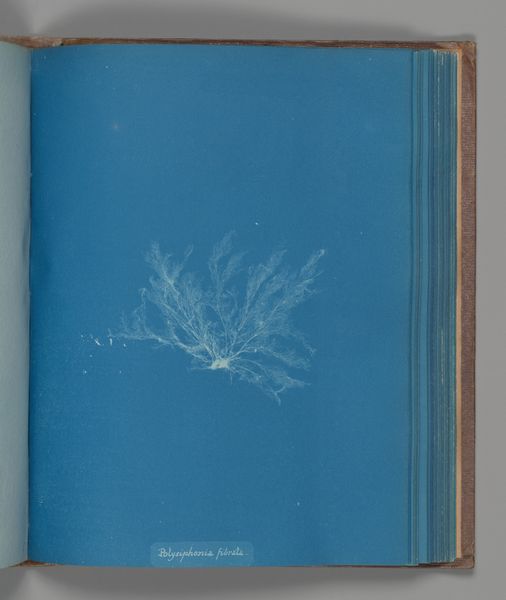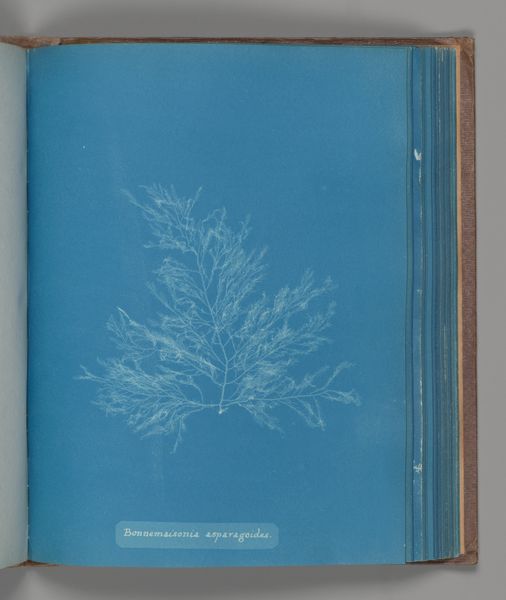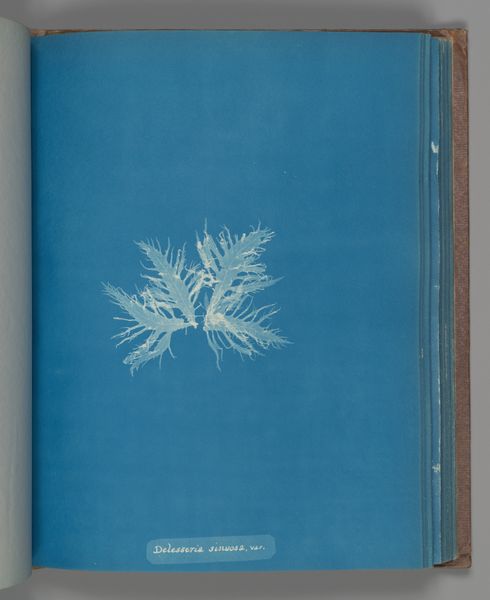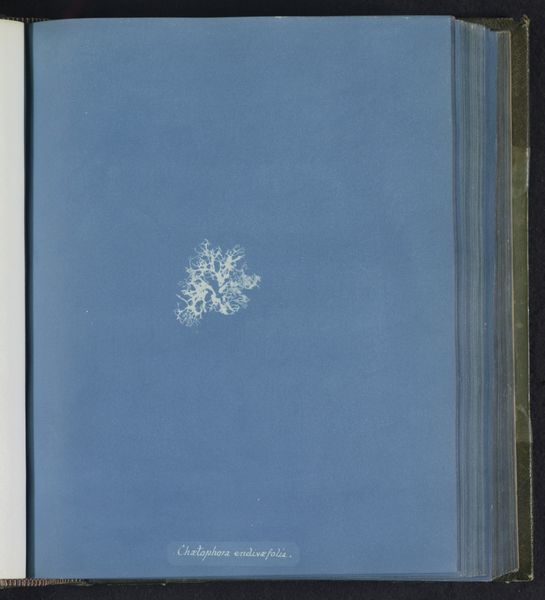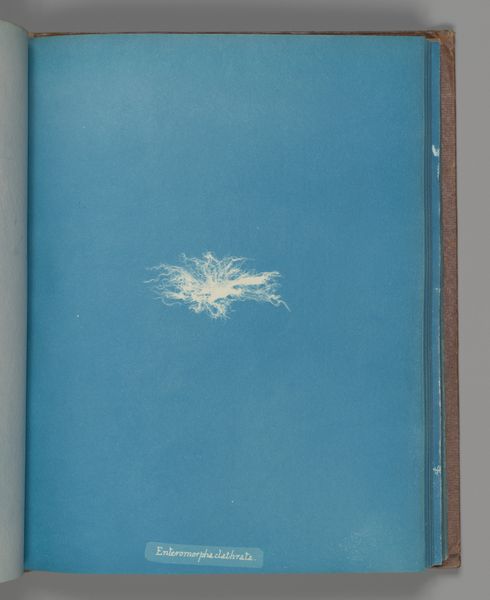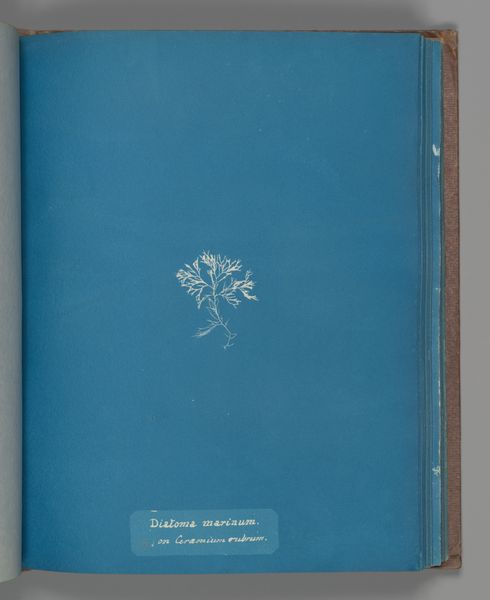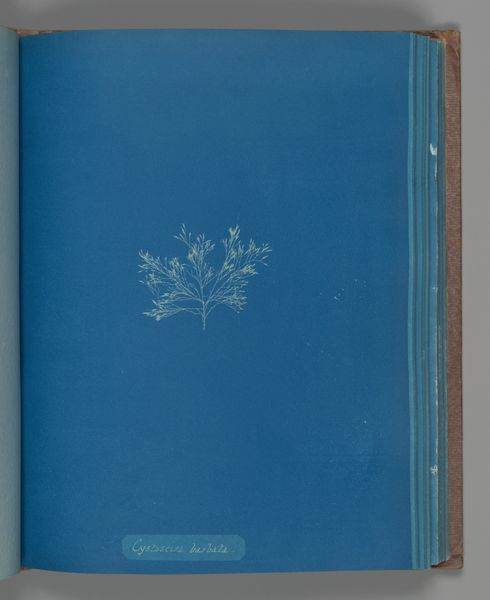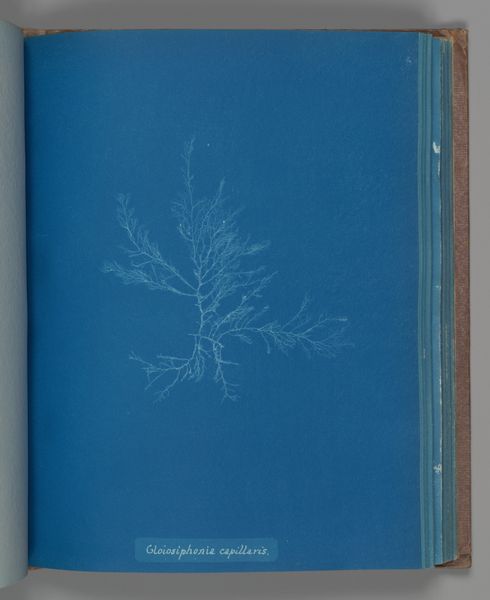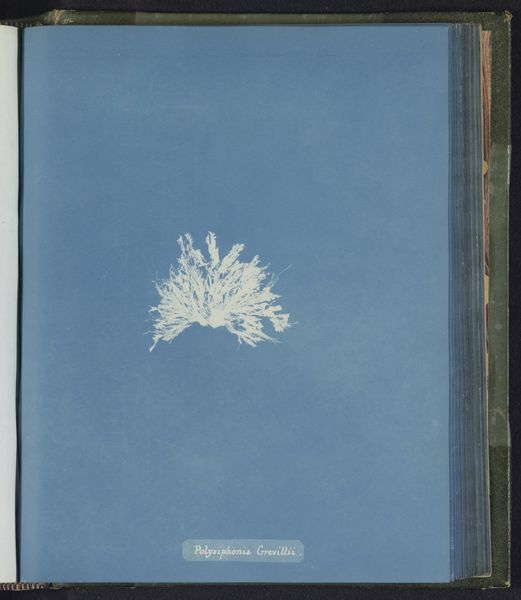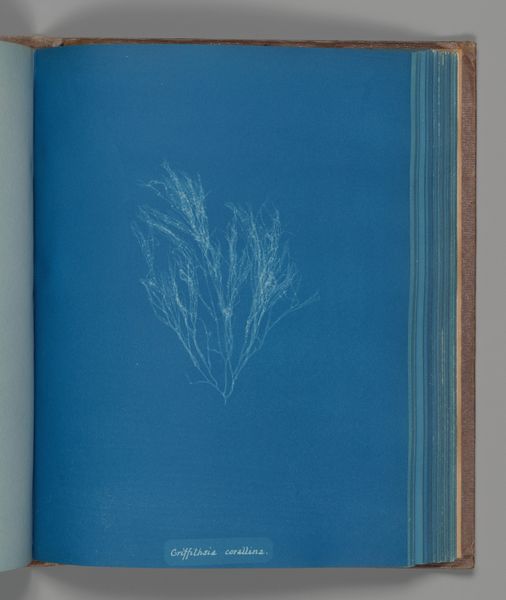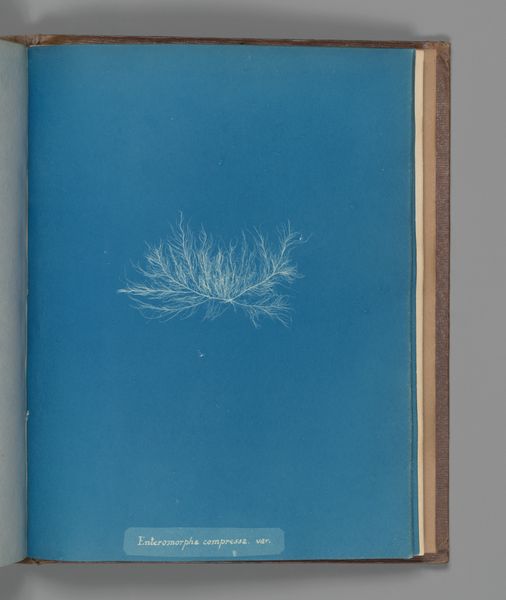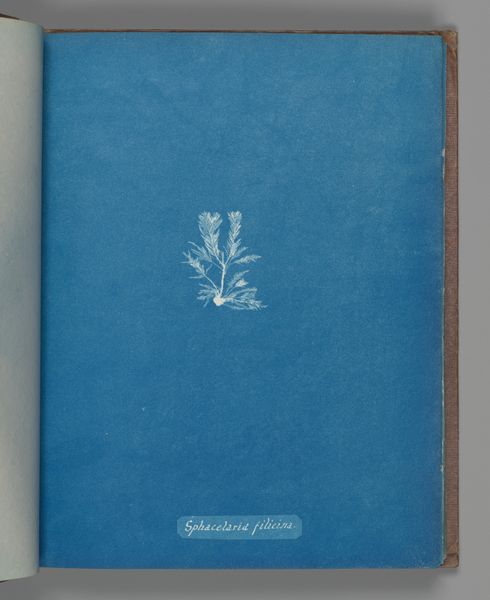
print, cyanotype, photography
#
still-life-photography
# print
#
cyanotype
#
photography
#
geometric
#
naturalism
Dimensions: Image: 25.3 x 20 cm (9 15/16 x 7 7/8 in.)
Copyright: Public Domain
This is a cyanotype made by Anna Atkins, an English botanist and photographer, in the mid-19th century. The image depicts a species of red algae known as Callithamnion Hookeri. Atkins created this photogram as part of her larger project documenting British algae, published in a series of books. In this period, photography was newly emerging, and its role was debated. Was it a scientific tool, an artistic medium, or both? Atkins used cyanotype, a simple photographic process that produces a distinctive blue print. The choice of this medium speaks to the intersections of art, science, and technology in the Victorian era. Atkins's work can be seen as an early example of data visualization and an institutional record. To fully appreciate Atkins's contribution, consider the scientific and artistic conventions of her time. Researching botanical illustration, the history of photography, and the role of women in science can give us a richer understanding of this image's historical significance. Art is always contingent on its social and institutional context.
Comments
No comments
Be the first to comment and join the conversation on the ultimate creative platform.
